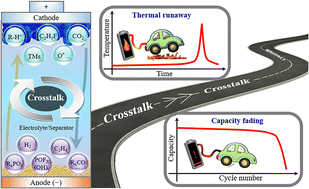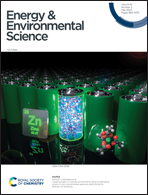The significance of mitigating crosstalk in lithium-ion batteries: a review
Abstract
High-energy lithium-ion batteries are being increasingly applied in the electric vehicle industry but suffer from rapid capacity fading and a high risk of thermal runaway. The crosstalk phenomenon between the cathode and anode, that is, the diffusion of parasitic products across the separator to the counter electrode, is receiving intensive attention because of its significant effect on battery life and safety. A comprehensive understanding of the overlooked crosstalk mechanisms is extremely important for enhancing battery survivability. The aim of this review is to reveal the mechanisms of electrode crosstalk to achieve the advancement of long-life, safe, high-energy batteries. Firstly, the origins of bidirectional crosstalk phenomena, including both cathode-to-anode and anode-to-cathode crosstalk, are summarized. Electrode crosstalk boosts interfacial side reactions, thereby accelerating cycling decay and even triggering serious exothermic reactions. Secondly, recent progress in suppressing crosstalk, including electrode material modification, electrolyte optimization, and separator design, are outlined. Finally, strategies regarding the restraint of both the generation and migration of crosstalk are proposed. Focusing on electrode crosstalk, this work provides enlightening insights into the failure pathways of high-energy batteries.



 Please wait while we load your content...
Please wait while we load your content...